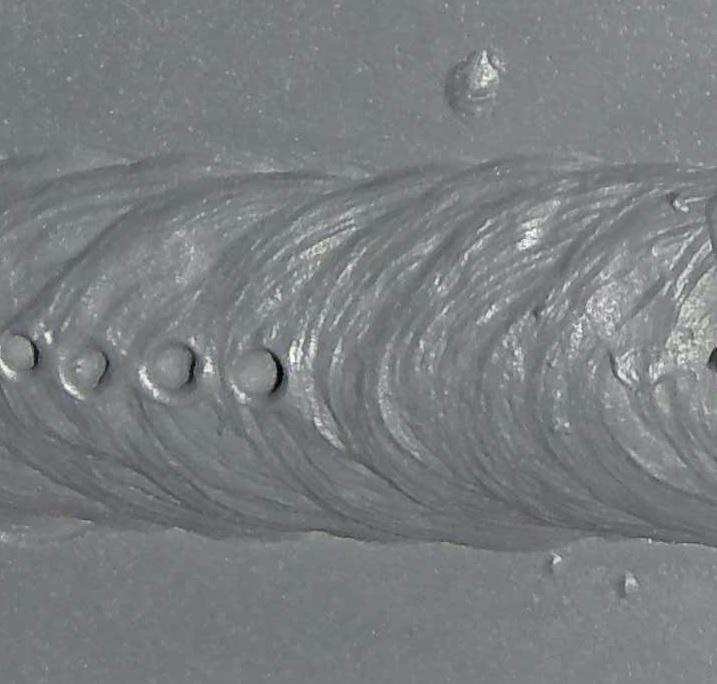Unwinding the Mystery of Porosity in Welding: Tips for Minimizing Flaws and Making The Most Of Quality
In the detailed world of welding, porosity stays a relentless challenge that can dramatically impact the top quality and stability of bonded joints. Comprehending the aspects that add to porosity development is important in the search of remarkable welds. By unraveling the secret of porosity and carrying out reliable strategies for problem reduction, welders can raise the criteria of their work to achieve exceptional high quality results. As we look into the midsts of porosity in welding, revealing the tricks to its avoidance and control will certainly be critical for experts seeking to grasp the art of top notch weldments.
Understanding Porosity in Welding
Porosity in welding, a common issue encountered by welders, describes the visibility of gas pockets or spaces in the welded material, which can endanger the stability and high quality of the weld. These gas pockets are generally entraped throughout the welding process due to numerous aspects such as improper shielding gas, infected base products, or inaccurate welding parameters. The development of porosity can deteriorate the weld, making it vulnerable to cracking and rust, ultimately causing structural failings.
Comprehending the source of porosity is vital for welders to efficiently stop its incident. By recognizing the value of maintaining correct gas protecting, ensuring the tidiness of base materials, and enhancing welding settings, welders can substantially decrease the chance of porosity development. Furthermore, making use of methods like pre-heating the base material, utilizing correct welding strategies, and carrying out comprehensive examinations post-welding can even more assist in minimizing porosity flaws. Overall, an extensive understanding of porosity in welding is essential for welders to create high-grade and resilient welds.

Usual Root Causes Of Porosity
When checking welding procedures for potential high quality concerns, recognizing the common root causes of porosity is necessary for keeping weld integrity and avoiding structural failures. Porosity, defined by the visibility of tooth cavities or spaces in the weld steel, can dramatically endanger the mechanical residential or commercial properties of a welded joint. One typical reason for porosity is incorrect securing gas coverage. Inadequate shielding gas flow rates or improper gas mixtures can lead to atmospheric contamination, resulting in porosity development.
An additional common reason of porosity is the presence of moisture and contaminants on the surface area of the base steel or filler material. When welding materials are not effectively cleaned up or get redirected here are exposed to high levels of moisture, the vaporization of these impurities during welding can create gaps within the weld bead. Additionally, welding at inappropriate specifications, such as excessively high travel rates or currents, can generate too much turbulence in the weld pool, capturing gases and causing porosity. By resolving these typical causes via appropriate gas shielding, product preparation, and adherence to optimum welding specifications, welders can decrease porosity and improve the quality of their welds.
Techniques for Porosity Avoidance
Implementing reliable safety nets is essential in decreasing the occurrence of porosity in welding procedures. One technique for porosity prevention is ensuring appropriate cleansing of the base steel before welding. Pollutants such as oil, oil, rust, and paint can result in porosity, so comprehensive cleansing making use of proper solvents or mechanical approaches is important.

Making use of high-quality filler materials and protecting gases that are appropriate for the base steel and welding procedure can substantially minimize the danger of porosity. Furthermore, maintaining appropriate welding specifications, such as voltage, current, take a trip rate, and gas circulation rate, is important for porosity prevention.
In addition, using appropriate welding methods, such as keeping a regular traveling rate, electrode angle, and arc length, can help prevent porosity (What is Porosity). Ample training of welders to guarantee they comply with best techniques and quality assurance treatments is likewise necessary in reducing porosity problems in welding

Best Practices for Top Quality Welds
One secret technique is maintaining correct tidiness in the welding location. Completely cleansing the workpiece and surrounding location before welding can assist minimize these issues.
An additional ideal technique is to carefully select the appropriate welding criteria for the details products being joined. Appropriate parameter selection makes certain ideal weld penetration, combination, and total quality. Making use of top notch welding consumables, such as electrodes and filler metals, can considerably impact the last weld top quality.
Value of Porosity Control
Porosity control plays a critical duty go to these guys in making certain the stability and high quality of welding joints. Porosity, characterized by the visibility of tooth cavities or spaces within the weld metal, can dramatically jeopardize the mechanical properties and structural honesty of the weld. Extreme porosity weakens the weld, making it extra prone try here to breaking, deterioration, and general failure under functional loads.
Effective porosity control is necessary for maintaining the preferred mechanical residential or commercial properties, such as toughness, ductility, and toughness, of the welded joint. What is Porosity. By decreasing porosity, welders can enhance the general quality and integrity of the weld, ensuring that it satisfies the efficiency requirements of the designated application
In addition, porosity control is vital for accomplishing the wanted visual appearance of the weld. Extreme porosity not just weakens the weld however additionally interferes with its visual charm, which can be important in sectors where looks are vital. Proper porosity control methods, such as making use of the proper shielding gas, controlling the welding specifications, and making sure correct sanitation of the base products, are essential for producing premium welds with marginal issues.

Final Thought
In conclusion, porosity in welding is a common issue that can jeopardize the high quality of the weld. It is necessary to manage porosity in welding to make sure the stability and strength of the last item.